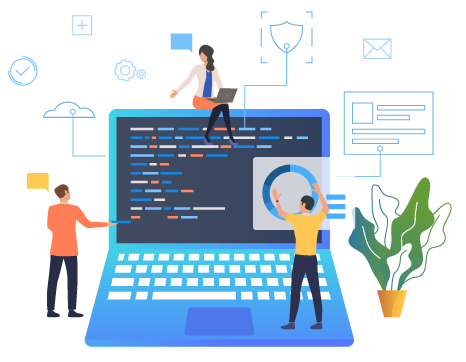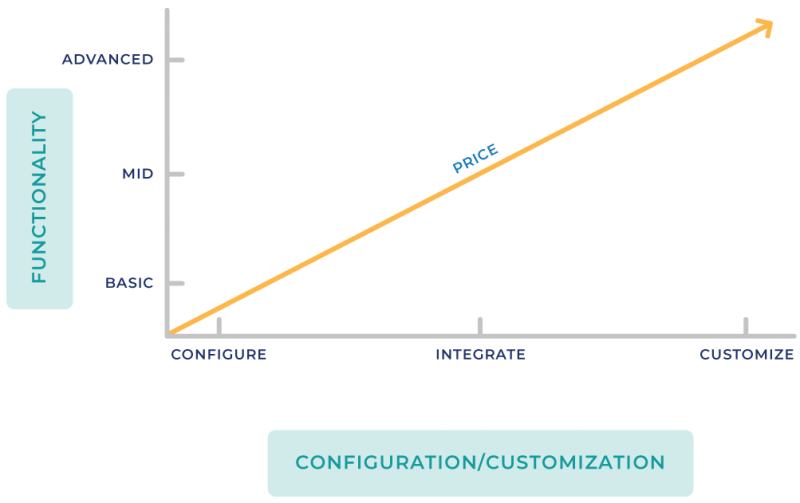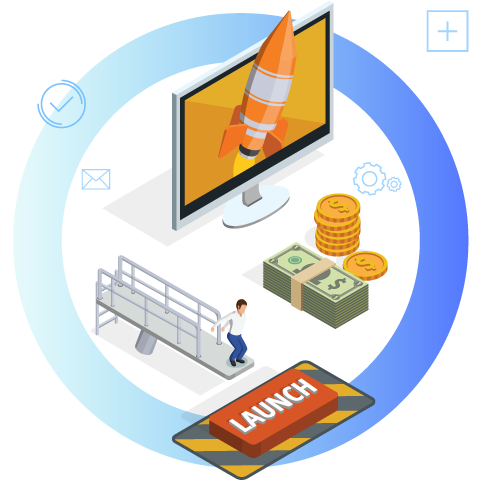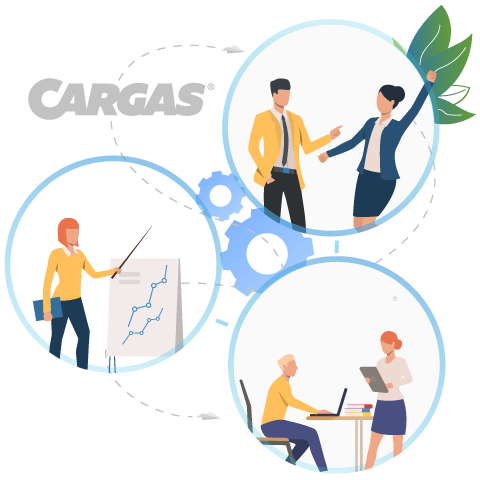How Business Software is Priced: ERP, CRM, and Accounting Software
Business software like ERP, CRM, and financial management products often come with a hefty price tag. In addition to the cost of the software itself, you’ll also pay to have it set up and configured for your business. Here’s a breakdown of how business software is priced, why the cost often seems high, and what exactly you’re getting for that price tag.
What is Business Software?
Business software is any product that helps you run your business. That could be a financial management solution that supports your accounting team, an ERP (enterprise resource planning) solution that supports your manufacturing and distribution needs, or a CRM (customer relationship management) solution that supports your sales, marketing, and customer service teams.
Business software often focuses on efficiency—automating mundane manual tasks and streamlining repetitive workflows so your team has more time to devote to more important tasks. It also focuses on business insight—giving you better and faster access to information to evaluate your business performance and make strategic decisions.

How is It Priced?
First, you’ll pay for the software itself. In some cases, you can purchase the software outright by paying a one-time fee (called a perpetual license). But today, subscription pricing, where you pay a monthly or annual fee for ongoing use of the software, is much more popular.
Second, you’ll pay for implementation. This is setup and installation of the software. Implementation involves getting all of the data stored in your existing software into your new solution. And tailoring the software to the way your business works. For example, setting up your chart of accounts, establishing rules for inventory replenishment, or creating an automated workflow to assign leads to a salesperson.
In some cases, the software provider will sell you the software and also handle your implementation. In other cases, the software provider relies on a network of partners to help their customers implement the software. For example, Cargas is a Sage and Microsoft partner. Sage and Microsoft develop and provide software products, and Cargas helps customers implement those products.
Third, you’ll pay for ongoing support. Every software provider is different, but support plans typically cover software upgrades and enhancements, access to self-help resources and training materials, and phone or online support to answer questions and solve technical problems. Support may be included in the cost of the software. Or it may be something you have to pay for separately.
Just like with implementation, some software providers will offer support plans, while others rely on their partners to support their customers.
What Drives Costs Up? And What Keeps Them Down?

Why Are Some Implementation Prices So Expensive While Others Are So Cheap?
Software partners like Cargas offer implementation services at a variety of price points. You’ll see prices as low as $3,000 and as high as $100,000 or more. Why such a big range? The difference is what you’re getting with each implementation.

Think of it this way. You can plan your own international trip. Research and book your own flights and accommodations. Figure out transportation. Read scores of travel blogs to figure out where to go and when, the best places to eat, the hidden destinations most tourists miss. Will your trip be successful? Of course. But all the effort will be on your end, and you’ll be relying solely on your ability to do the research and figure things out for yourself.
This is the equivalent of a $3,000 software implementation. You’re paying $3,000 because your implementation partner isn’t really offering you a lot. They’ll deliver the software as it is out of the box and maybe throw in a few pointers about setup. But it will be on you to do all the configuration and training. You’ll have to figure it out on your own, and hope you’re making the right decisions.
On the other hand, you can work with a luxury travel agency that specializes in unique travel experiences. Not only will they take care of your flights and accommodations, they’ll find out what your interests are and tailor your trip to you. If you’re a foodie, they’ll give you a list of the best places to eat. If you’re physically active, they’ll recommend the best hiking, climbing, surfing, and swimming locations. They’ll have good relationships with the locals and be able to offer you experiences unavailable to most tourists.
This is a $100,000 software implementation. You’re paying $100,000 for the experience and knowledge of your implementation partner. For their ability to guide you through the process and tailor the software to meet your exact needs. Not only will they handle the technical aspects of setup and configuration, they’ll have a proven implementation methodology, including project management services.
They’ll provide training, go-live support, and have a transition plan in place to help you start using your new software. A partner offering this level of service will want to maintain a long-term relationship with you to provide ongoing support and help you adapt the software over time as your business and needs change.
Where Does Cargas Fall?
You’ll find Cargas’ implementation pricing falls in the mid to upper portion of the range outlined above. We have more than 30 years of experience helping businesses use software to meet their strategic goals. We’ve been designated a Microsoft Gold Partner and s Sage Intacct Premier Partner.
Our consulting team has the technical expertise needed to help you implement and configure the products we sell. They also have real-world experience in our areas of focus (accounting, operations, and sales and marketing), so they’re better equipped to understand your business and your needs.
Our company purpose is shared success. We don’t believe we’re successful unless you’re successful. As an employee-owned company, our team cares for our customers as an owner would.
With hundreds of implementations under our belt, we highly value our knowledge and experience, and we believe you will too. That’s what you’ll see reflected in the price for our services.

Ready to Learn More?
Choosing new software for your business can feel overwhelming. We’ve got your back. Take advantage of our expert team to understand your options. We’d love to learn more about your business and how software fits into your strategy. Let’s connect!